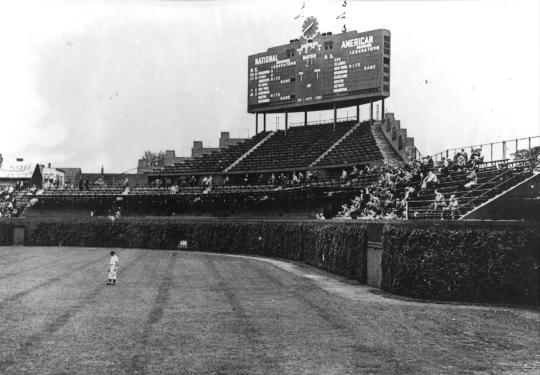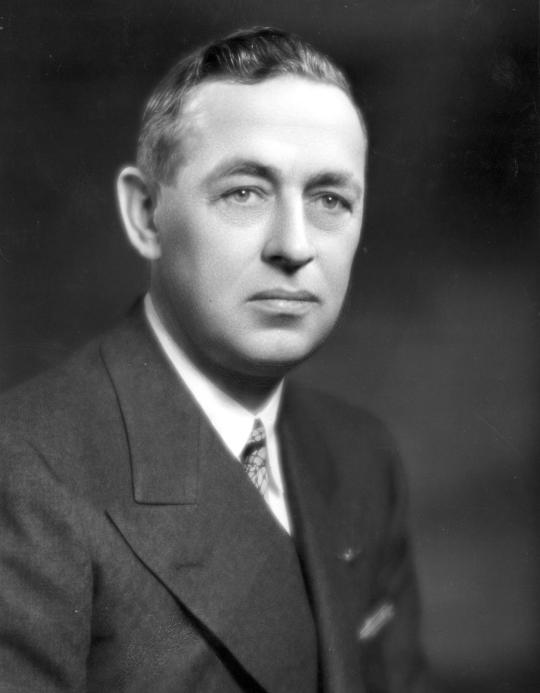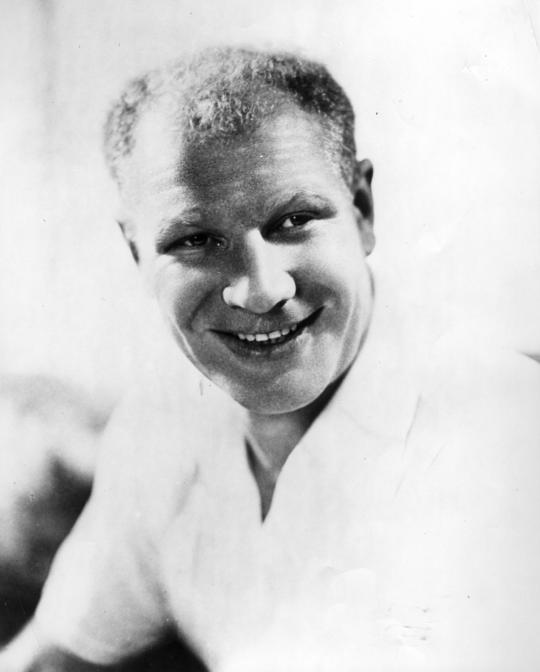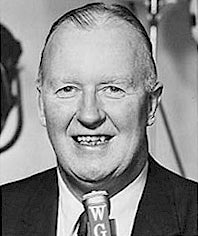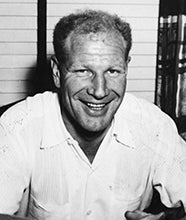“Above all, Mr. Wrigley wanted an outdoor, woodsy motif.”
- Home
- Our Stories
- Diamond in the Ivy
Diamond in the Ivy
The ivy that adorns the outfield walls at Wrigley Field in Chicago is primarily common Boston ivy, a clinging woody vine of the grape family. Native to eastern Asia, this import is the ivy that covers the walls of many colleges. It is the ivy of the Ivy League.
But on the walls of one of baseball’s most beloved ballparks, the ivy is something apart from all the other ivy covered walls… in that it helps define a team, a neighborhood and a city. The ivy reminds Cubs fans – and baseball fanatics everywhere – of the timeless beauty of the game.
The ivy is part of the state of mind created when one enters the “Friendly Confines” – a description of Wrigley Field first used by Cubs announcer Jack Brickhouse in the 1950s. As Richard Hoffer wrote in Sports Illustrated: “It's impossible to feel blue at Wrigley Field, even though your beloved Cubs are losing again. It's a national treasure, a true American original. It's ivy and brick and bleachers and a manual scoreboard and seats so close to the field you can almost hear the infield chatter of Hornsby, Hartnett and Banks.”
The ivy was part of a larger idea which was to market baseball as something more than a game played in a stadium but rather in a ballpark that was an oasis for the family, a respite from the hubbub of urban life.
The story of how the ivy got planted began when future Hall of Fame executive and promoter extraordinaire Bill Veeck was hired to work for the Chicago Cubs. Veeck’s father, William Veeck, Sr. had been the President of the Cubs and young Bill grew up working for and with the Cubs during school vacations. When his father died unexpectedly in 1933, Bill dropped out of college and was hired by Phil Wrigley, who had taken over the club after his father, William Wrigley, died in 1932.
Veeck began work as an office boy but quickly took on more responsibility. His role with the Cubs was more and more directed at putting fans in the seats and making them happy. One of his early jobs was to roam the stands and talk with fans to determine their wishes and bring back suggestions which would make coming to the ballpark more enjoyable. This assignment gained him a feature article in the Sporting News in early 1935 which pointed out: “Contacting the public is the duty of every official of every club, but Veeck is the first to have such a full time assignment.”
Using Veeck as his roaming fan ambassador was part of a larger Wrigley marketing scheme which, among other things, had his staff promoting the Cubs in the dead of winter. During the winter of 1934-35, ads ran in all the Chicago newspapers three times a week. The tag line on the ad was LOOK AHEAD TO SUNSHINE-RECREATION-HAPPY HOURS WITH THE CUBS AT WRIGLEY FIELD NEXT SUMMER. “You will note that the theme of the campaign is sunshine, recreation and pleasure.” a Cubs official told the Sporting News.
Wrigley was selling the Cubs and the experience of going to the ballpark just as he sold chewing gum. Heavy advertising and attractive packaging were important to his scheme. The package here was Wrigley Field and young Veeck was put in charge of delivering that new package through a series of major innovations which would culminate in the opening of a beautiful and expanded Wrigley Field. Veeck was charged with having the first phase ready in time for the 1937 World Series, which the Cubs were pursuing. Wrigley envisioned a larger more comfortable bleacher section, new reserved and box seat sections along the left field line. The new sections would be adorned with foliage and other artistic features.
“Above all,” Veeck said later, “Mr. Wrigley wanted an outdoor, woodsy motif.”
Veeck's job was to make this already fan-friendly and ambient venue ever more so. The new bleachers were to be the best available and new concession storage would be built under the new bleachers, as well as storage for the grounds-keeping equipment, including head groundskeeper Charlie Dorr’s new 30-mph lawnmower. The new seats were to be made of cypress and would be elevated 12 feet above the ground, assuring fans of a “much finer” view of the playing field. The construction would be of reinforced concrete, arranged in a series of curves around the corners, stepped up in a proper conformity with exact site lines, and supported upon an open steel framework. The new outfield walls would be re-built with a distinctive red brick and six red gates. And, the new bleachers were to be constructed so those fans on the rooftops along Sheffield and Waveland would still be able to watch the games for free as they always had.
Veeck and Wrigley actively added embellishments along the way. In early September, Veeck learned that Wrigley had invited some business associates to see the game the next day and wanted to show off his refreshed and increasingly verdant park. Veeck had originally planned on planting ivy for the 1938 season, but instead Dorr and his assistant Cotton Bogren and decided to plant ivy against the red brick right away. Overnight, the trio strung five strands of copper wire, draped with Boston ivy, 1.5 feet apart across the wall. The outfield wall covered 1,003 feet so they used 5,015 feet of wire. They then planted more ivy at the base of the wall inter-mixed faster growing Japanese bittersweet vines.
When the renovated Wrigley Field opened on Oct. 1 for the team’s last home series, fans were treated to vastly expanded bleachers and the new $100,000 scoreboard. An additional 32 feet at the right-field foul line and the loss of six feet on the left-field line had changed the dimensions of the park to 355 feet, seven inches to left, 400 feet to center and 353 feet to right – and have remained unchanged ever since. Edward Burns of the Chicago Tribune declared the renovated park to be nothing less than "the most artistic ball park in the majors" – a description that many would argue is still true today.
Paul Dickson is a freelance writer from Maryland

